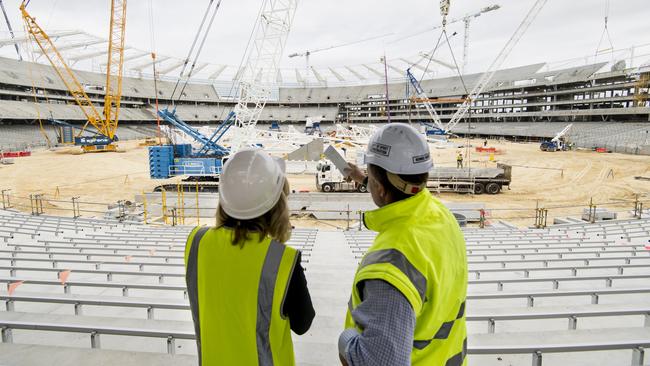WA’s line in the construction sand is a win for subcontractors
With its smart new building code, Western Australia is now leading the way in tackling excessive construction costs.

While the nightmare of the last week’s late Senate amendments to the Australian building code will plague Australia for two years (How the CFMEU’s Dave Noonan outplayed Hinch on the ABCC bill, December 1), Western Australia has shown how you quickly and easily introduce a building code to slash costs.
The WA code starts on January 1, 2017.
Western Australia is in recession and cannot afford to pay 20 to 30 per cent more for its commercial buildings for another two years, as it would be forced to do under the federal code.
More importantly, there are very few (if any) references to unions in the WA code. WA has woken up to the fact that the key to efficient building is to allow small subcontractors to do their work efficiently and be paid quickly.
The eastern-state builders who want to work in WA will require totally different management systems to the bloated, high-cost operations in eastern states and many will find it culturally difficult to operate efficiently.
Even if they comply with the code, many large builders will be killed in the tendering process by builders who know how to use the code to slash costs.
In essence the WA code is all about looking after the small business ‘subbies’ … the people who always get hit hard by big contractors and their union partners. In Eastern states many of our best subcontractors stay away from commercial building because their business will be destroyed.
Australia’s biggest change in commercial practice over the last decade has been the independent Contractors Act, which is forcing some eight million standardised contracts around Australia to be rewritten (Big business needs to get with the contract overhaul program, November 11) Western Australia uses that act as the basis of its code.
WA was alerted by the CFMEU that the industrial relations agreements in the building industry have become restrictive trade agreements between companies with the unions as the go-between (Mike Nahan’s radical appeal to the ACCC over building industry collusion, Nov 21).
Under current arrangements, agreements are reached between the head companies and the unions and all contractors are told what they must do to obey the rules, including standardised enterprise bargaining agreements.
There is no negotiation and subbies can be expelled from the contract and sent to the wall — but no longer in WA.
Here are some of the features of the WA code:
- Required compliance with unfair contract provisions both of the independent Contractors Act and the Australian Consumer law. That means that if a subcontractor has less than 20 employees and the contact is worth less than $300,000 over one year ($1 million over longer contracts) then there can be no non-negotiated prescriptive instructions that are unfair to the subbie and not essential for safety etc. In particular, there can be no removal of the subbie from the site if there is non-union employee of the subcontractor. That completely revolutionises the power in building. Subbies rule. Watch the costs go down.
- And just to make sure large builders do not flout the rules, the WA Small Business Commissioner has an investigative and dispute mediation role in disputes between contractors and subbies. The small business commissioner can refer possible breaches of code to a compliance unit. Again, it has nothing to with the old industrial relations bodies.
- There is a suite of measures adopted by the state government to ensure subcontractors are paid on time
- Non-compliance with the code could see building and construction contractors excluded from working on government projects. The code applies from January 1, 2017 (not November 2018 as occurred in Canberra) to major state building and construction contracts worth more than $10m. It will be rolled out to all other contracts when provisions are drafted and included in the tendering process.
WA says that they anticipate the code will apply to nine major projects before the end of January 2017, with a combined contract value in excess of $250m.
WA has an election next year and the Coalition is behind in the polls. The election will be fought over the rights of subcontractors. The WA Coalition now has a chance, particularly if the ALP wants to boost the cost of building by restoring control to unions and their corporate mates.






